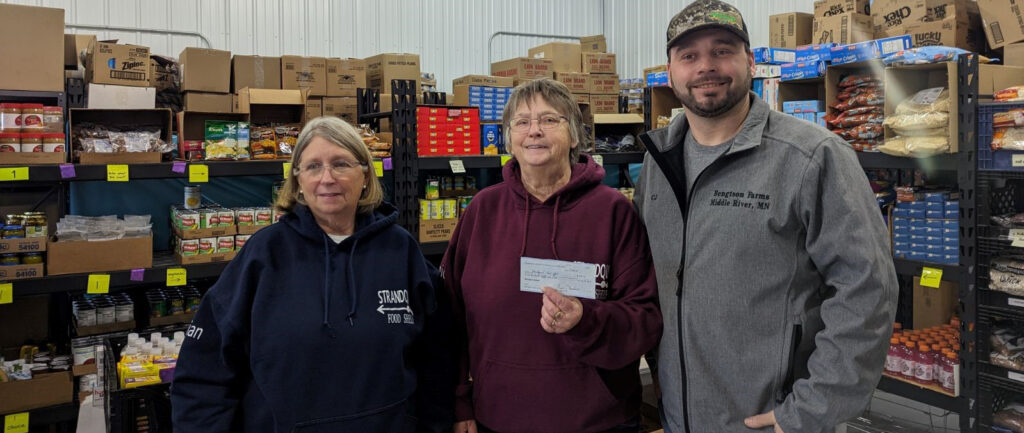Each year, the Minnesota Soybean Research & Promotion Council’s promotion action team selects for investment approximately two dozen projects for Minnesota soybean checkoff resources. The goal is to improve farmer profitability via well-targeted promotional efforts.
The promotion action team’s portfolio ranges from straight up promotion of U.S. soy for feed and food use at overseas conferences organized by the U.S. Soybean Export Council (USSEC); to Japan in-store promotion of U.S. pork produced from our soy; to educational efforts explaining to overseas soy buyers that Minnesota-origin soybeans are worth just as much per ton as soybeans grown closer to the equator, due to the superior essential amino acid profile of soybeans grown at northern U.S. latitudes.
But in this blog, I would like to cover in detail our newest project: new soy market development in the country of Uzbekistan. A now-independent piece of the former Soviet Union, Uzbekistan is the most unusual “totally undeveloped nation” soy market ever entered by organizations of the U.S. soy community that conduct market development activities.
Uzbekistan already has in place:
A) More than a dozen working oilseed crushing plants, and decades of experience producing oilseed meals in those crushing plants
B) More than four dozen working feedmills. Small and old, but still functional
C) A small number of modern poultry production facilities, which have installed recently purchased Europe-origin equipment
D) A significant number of recently opened Western fast food franchise restaurants that provide a ready market for meat products produced from the above-mentioned rudimentary infrastructure
Therefore, it already has a pseudo-Ag-Extension equivalent of some in-country demonstration farms. Because countries in the “totally undeveloped” category where past soy market development efforts were done by the U.S. Soy Family typically lacked #A, #C, #D (or all three), Uzbekistan having them results in potential for Uzbekistan developing as a market for U.S. soybeans and soymeal much faster than previous “totally undeveloped” countries have done.

Additional developments favoring rapid development of Uzbekistan demand for U.S. soybeans have been the recent imposition of export bans and/or exorbitantly high export tariffs on oilseeds and vegetable oils from Russia and Ukraine — two historic sometime suppliers to Uzbekistan that are now struggling to supply their own domestic demand (and prior export commitments to Egypt/Turkey) for those commodities. Uzbekistan’s government has become alarmed at these export bans and high export tariffs on oilseeds and vegetable oils from Russia and Ukraine, and is suddenly more eager for other imports.
Uzbekistan demographic factors in favor of strong soy market development include:
E) A dense human population (34 million people) that is becoming more prosperous. Uzbekistan has long produced petroleum, natural gas, textiles, and has the world’s largest gold mine
F) An economy that continued growing even during the COVID year
G) Demand for meat is increasing
H) High in-country prices for cooking oils, as a result of many of the above factors
I) In-country manufacturing of pasta, breads, sausage, and other food products that benefit from addition of soy products (e.g., soyflour, soy protein concentrate, etc.) is increasing
Achieving aggressive soy market development goals will not be easy. Cotton has long been Uzbekistan’s largest commercial crop, and cheap cotton byproducts have been available for feed ration use for many years. Although there is thus an infrastructure in place to process cotton waste into products for animal consumption (e.g., cottonseed meal) and human consumption (e.g., cottonseed oil), that Uzbekistan infrastructure — including the oilseed crushing plants — consists of old facilities in need of replacement and upgrading. 1
Although a modest amount of Argentina-origin soybean meal is imported, the scarcity of local experience in the manufacturing and feeding of soymeal-based rations will need to be overcome via dissemination of U.S.-source technical expertise. That is already occurring in a small way as part of the current Minnesota Soybean contract in place with the in-country contractor. One result of that contractor’s ongoing meetings (e.g., with the above-mentioned modern poultry facility owners) has been for some of them to request technical literature covering particular aspects of manufacturing and feeding soymeal-based feed rations. Distribution to prequalified recipients has occurred of some Russian-language documents, and the English-language Fullfat Soybean Meal Handbook, which comes as a package, along with four prerecorded Northern Crops Institute fullfat soymeal webinars. 2
1 Gossypol is a phenolic compound naturally produced in the cotton plant. It is toxic at high doses to animals and to humans. The current Uzbekistan vegetable oil production facilities lack equipment and expertise to completely remove it from the cottonseed oil they produce.
2 Funded jointly by MSR&PC and the North Dakota Soybean Council, the FULLFAT SOYBEAN MEAL HANDBOOK was published by Northern Crops Institute (Fargo, North Dakota) in 2020.
Kim Nill is Minnesota Soybean’s director of market development.







